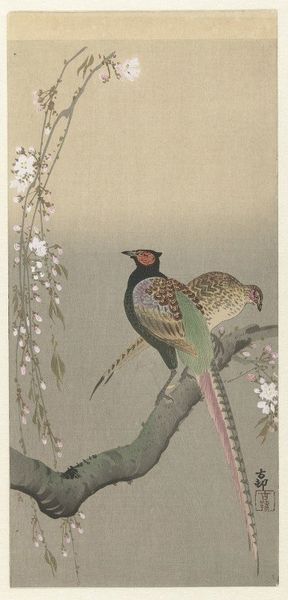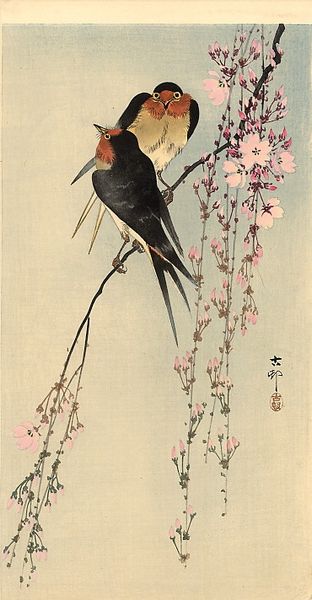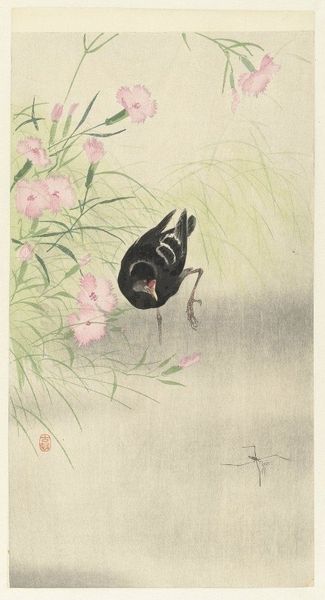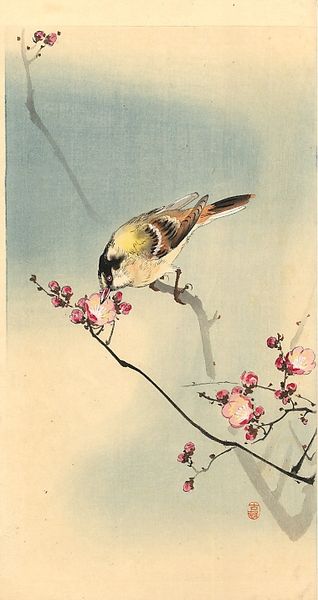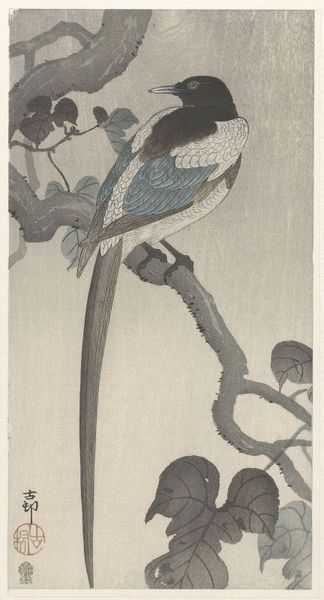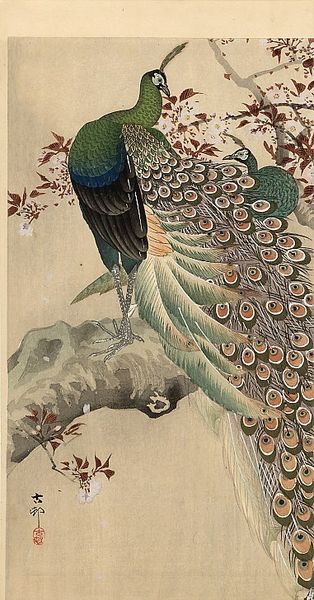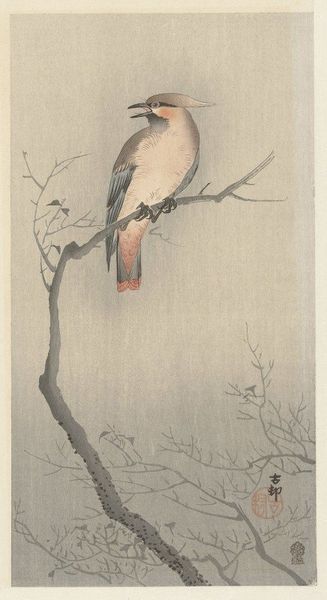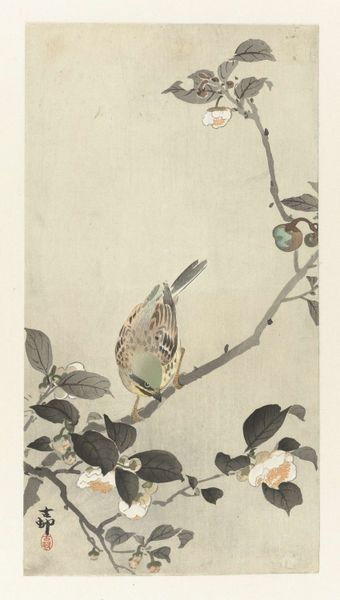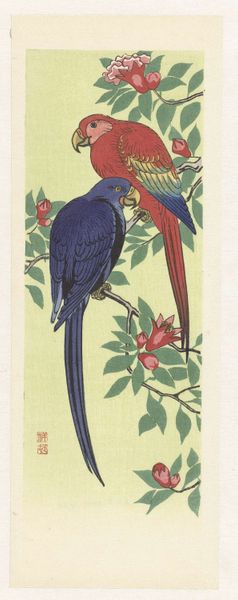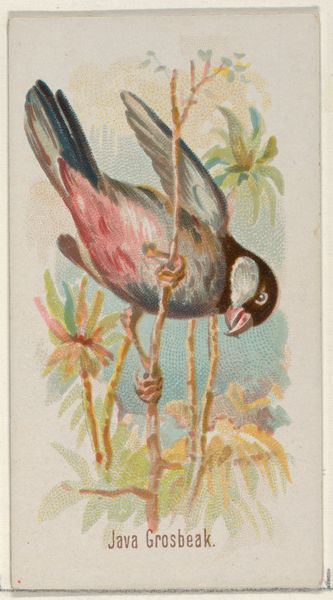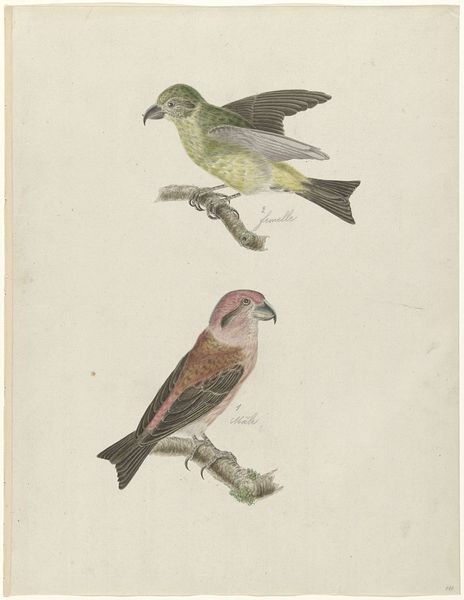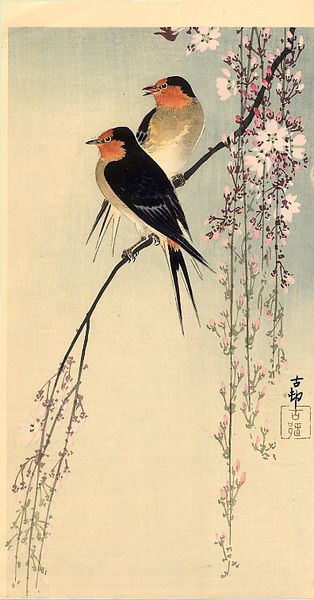
Copyright: Public Domain: Artvee
Editor: So, this is "Pheasant couple and plum blossom" by Ohara Koson, created sometime between 1900 and 1930. It’s a colored woodblock print, and it's got a lovely, almost ethereal quality to it. The birds seem very intentionally placed. What stands out to you when you look at this piece? Curator: Immediately, I'm drawn to the intersection of nature and cultural representation. Consider that these aren't just pheasants and blossoms; they're signifiers. Plum blossoms, often blooming in late winter, symbolize resilience and renewal in Asian art. The pheasants themselves? Editor: Status, maybe? They do look rather regal. Curator: Precisely. The male, especially with its dramatic plumage, speaks to idealized masculinity and power structures within society. The presence of a 'couple' in the title leads me to wonder about gender roles and expectations being subtly reinforced. Ukiyo-e prints were consumed by a wide audience... How might this imagery have shaped their understanding of the world around them? Also, note how delicate this rendition of nature is, yet simultaneously artificial, as if staged to reinforce patriarchal norms of society. Do you notice that tension, and can you detect that commentary through the artist's gaze? Editor: I do see it now. The delicacy and staging create a subtle commentary. It’s more complex than just a pretty picture. Curator: Exactly! It invites us to analyze the intricate connections between aesthetics, cultural values, and social constructs that operate and intersect, influencing gender roles within both the image and society. Editor: I’m going to remember to look for those layers in other works too. It completely changes how you view the art. Curator: It is important to analyze all levels of symbolism and social construct present in historical artwork in order to create contemporary interpretations, even with seemingly innocuous prints.
Comments
No comments
Be the first to comment and join the conversation on the ultimate creative platform.
